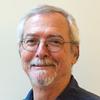Research Terms
This micro-biofabrication system combines computer vision, robotics, micromanipulation tools, and a novel culture medium to enable the creation of optimized 3D cellular structures. A level of exquisite detail exists in the intricate pattern and spatial structure of cells found in developing tissue. Micromanipulation tools allow precise translation and placement of single cells. However, available bioprinting systems cannot employ these tools to build highly intricate multicellular 3D structures in a cell-by-cell manner. They cannot hold the deposited cells in place while building structures without creating misconfigured layers or dispersed single cells. Researchers in many fields need effectively perfect multicellular 3D structures to understand topics like embryonic development, function-form relationships, immune signaling, and drug screening for efficacy and toxicity.
Researchers at the University of Florida have developed a cellular micro-masonry system that enables the microfabrication of highly intricate 3D cell structures. A 3D printing culture medium supports cellular structures as they are built one cell at a time using micromanipulation techniques and real-time imaging.
A bioprinting system that builds perfect 3D structures cell by cell
This cellular micro-masonry system integrates a cell translation system, an imaging system, and a 3D culture medium. The culture medium that supports the 3D construction of cells is a liquid-like solid made from jammed microgels swollen in liquid growth media. Through micromanipulation and cell aspiration performed within this culture medium, the system retrieves dispersed cells one at a time, translates them to the building area, and places them at the desired location in 3D space. The system is mounted on a fast-scanning multi-photon microscope to enable real-time tracking of cells, path corrections, and structural refinements during the building process.
This therapeutic vaccine treats Lewy body diseases, such as Parkinson’s disease, by clearing misfolded protein aggregates utilizing a patient's own immune system. An estimated 1.4 million people in the U.S. suffer from Lewy body dementia, making it the second most frequent form of degenerative dementia in the country. However, Lewy body diseases often go misdiagnosed until patients present symptoms associated with moderate or severe stages of the disease. Incorrectly prescribed medications due to misdiagnosis further worsens the disease state, potentially resulting in death. Available treatments for Lewy body diseases include a peptide-based vaccine under clinical trial investigation. However, the use of peptide and related antibody-inducing vaccines runs the risk of prompting an auto-immune response in the patient. Other treatment options for these diseases provide only symptomatic relief that wears off as the disease progresses and does nothing to prevent further neurodegeneration.
Researchers at the University of Florida have developed an adoptive cellular therapy vaccine that makes use of the patient’s own cellular immunity to reduce the misfolded protein aggregates characteristic of Lewy body diseases, providing treatment by inhibiting future neurodegeneration. Since this vaccine does not involve the use of antibodies, the chance of patients experiencing an auto-immune response decreases.
Adoptive cellular therapy vaccine that treats Lewy body diseases with lessened risk of auto-immune response
This adoptive cellular therapy involves taking T cells from the patient’s body, exposing them to an alpha-synuclein mutant antigen, and administering the T cells back into the patient’s body. This grants the patient’s immune system the ability to specifically target cells containing the misfolded alpha-synuclein aggregates and clear them from the body, preventing accumulation of the mutant proteins.
































































DEPARTMENT OF NEUROSURGERY PO BOX 100265 GAINESVILLE, FL 326100265
